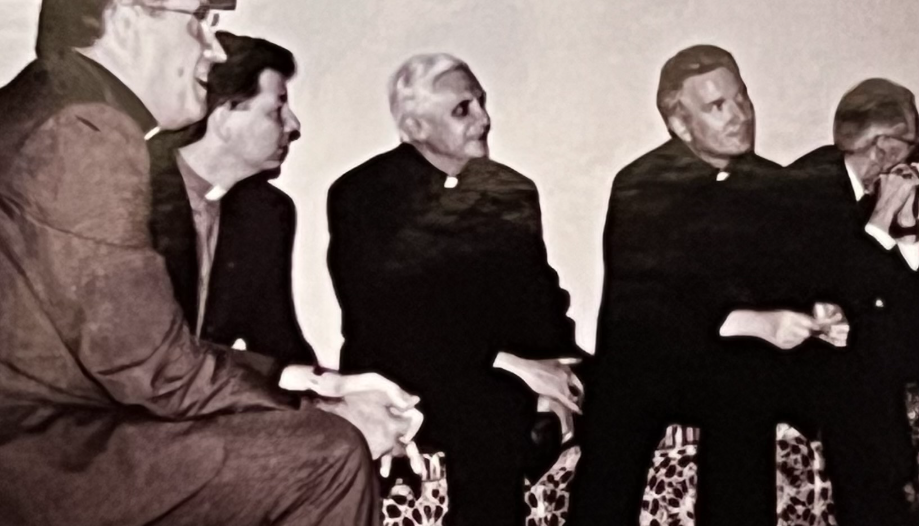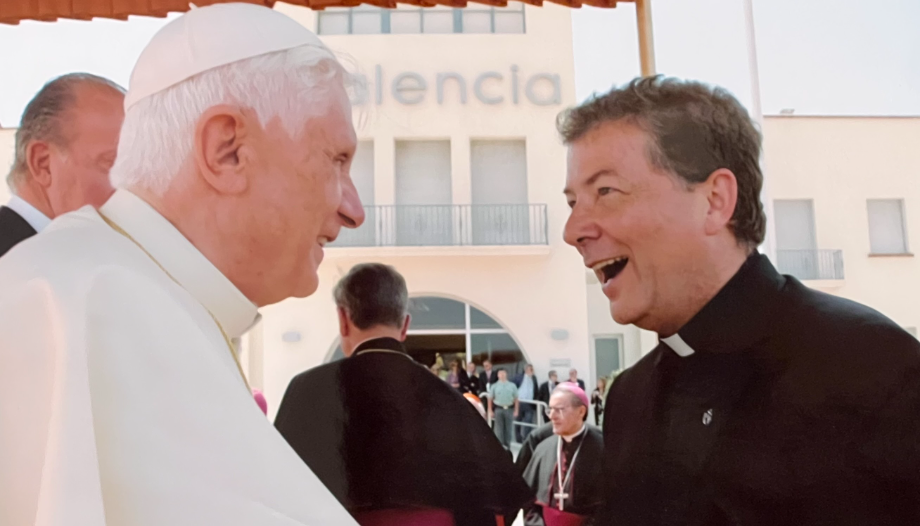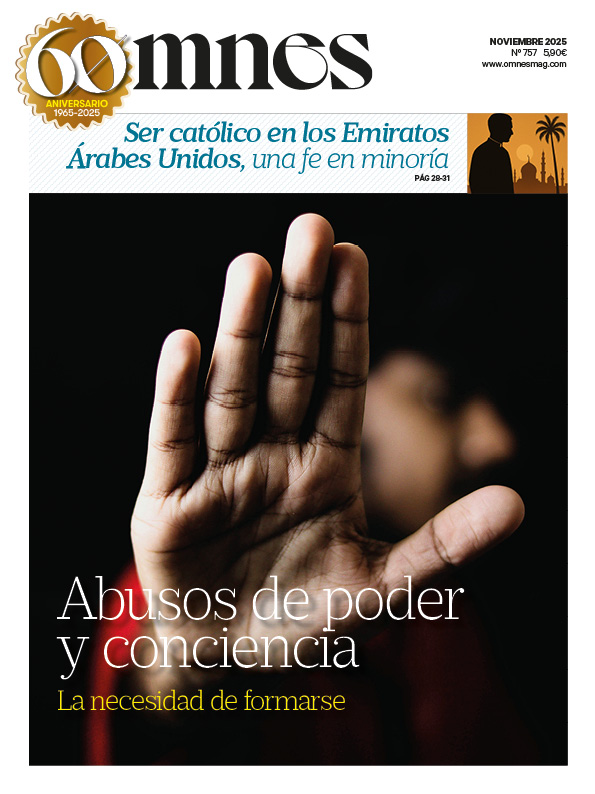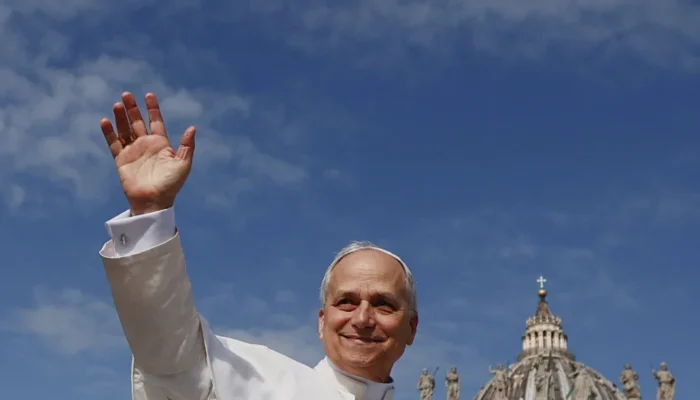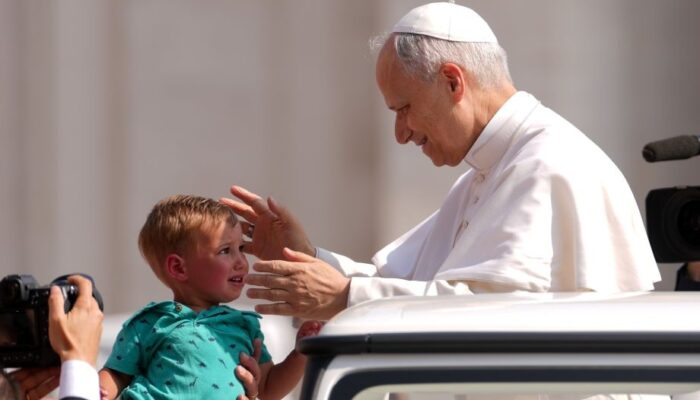Today marks the second anniversary of the death of Benedict XVIa key figure in the recent history of the Church. The auxiliary bishop of Madrid, Bishop Juan Antonio Martínez Camino, who had the opportunity to meet him during his visits to Spain, shares in this interview a close and enriching perspective on the Pope Emeritus.
From his personal memories to the impact of his spiritual and theological legacy on the Church in Spain, Bishop Martínez Camino reflects on the depth of his teaching, his human charism and the unforgettable moments he lived with him.
Two years ago Benedict XVI passed away. For you, who knew and treated him, what did his death mean to you?
- The death of a person whom one loves and to whom one owes much is always a spiritual blow. That was the case when I received the news that Benedict XVI had died. I had not had much personal contact with him, but I appreciated him and I appreciate him very much. His discernment of the dramatic situation of the post-conciliar Church was a great help to me.
I remember that in January 1985, on the train back to Frankfurt, I read his "Report on Faith" in one sitting. That was one of those readings that marked my life. I have since read a good part of his extensive theological work; and Deus caritas est and, above all, Spe salvitwo unforgettable encyclicals. Then came the surprise of being named bishop by him.
You were involved in two major events in Spain in which you participated. Benedict XVIHow did the Holy Father experience those moments? What would he highlight from those days?
- In Valencia I had the good fortune, as Secretary General of the Episcopal Conference, to be among those who received him at the Manises airport. He came happy and, as always, very attentive to people and details.
In Madrid, I was not only able to be at Barajas to welcome him, but also to share a meal offered by the host of WYD, Cardinal Rouco, to the Pope, his companions and the bishops of the Ecclesiastical Province of Madrid and the Executive Committee of the Episcopal Conference. We were twenty-four people, including the Pope. The atmosphere was serene and familiar, but at the same time solemn and unique.
The next day, the summer thunderstorm that surprised us during the Cuatro Vientos VigilIt was the perfect occasion to highlight the spiritual peace that Benedict XVI carried in his soul, in the midst of all the gales.
You also personally attended Benedict XVI in his visits to Spain. What was Benedict XVI like in his close relationship, what anecdotes or personal facts do you remember from those days?
- I had the opportunity to deal with it more closely in 1993, when Cardinal Ratzinger came to close a Theology Course on the then recently published "....Catechism of the Catholic Church". It was one of the summer courses of the Complutense University, in El Escorial. I went to pick him up at Barajas. I don't remember why, we talked about Toledo and he told me he had never been there. I proposed him to stay one more day and accompany him to the City of the Tagus. He accepted.
At the end of the course, we went in my small car to Toledo. Olegario González de Cardedal and Josef Klemens, Ratzinger's secretary, were also there. Archbishop Marcelo, whom I had warned by telephone of the illustrious visit, was delighted to welcome us for lunch. After a spectacular concluding toast, Cardinal de Toledo offered a room for a siesta. Cardinal Ratzinger looked at the clock, thanked us for the gesture and told us that we had better continue enjoying Toledo. It was three o'clock in the afternoon on July 10! At that hour, there were no birds in the streets... He liked Spain very much and he liked not to waste time.
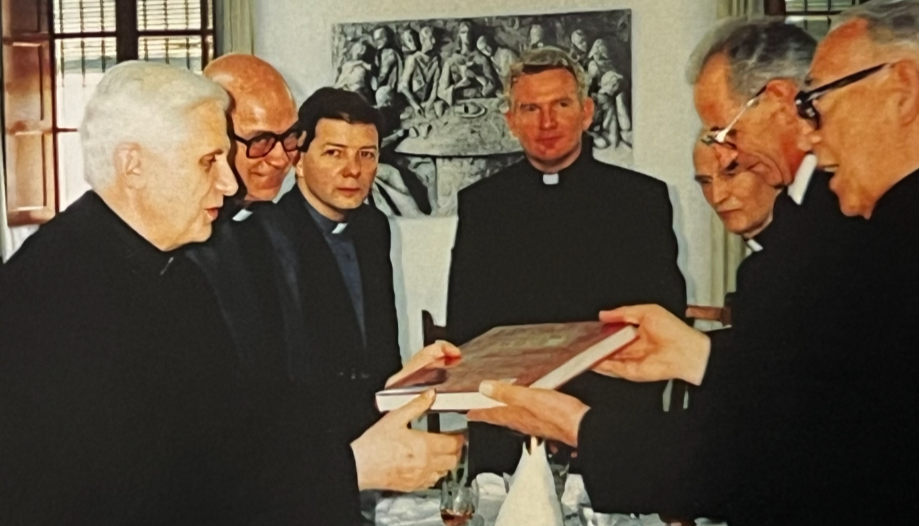
How did Benedict XVI see the Church in Spain? What did those two great meetings mean for the Church in Spain?
- Ratzinger was an extraordinarily learned man and a theologian of exceptional stature. He deeply appreciated the role played by Spain in the living Tradition of the Church. It can be easily verified just by reading his great book "Jesus of Nazareth", where he recognizes how great Spanish saints are a special presence of Christ and his Spirit not only in the past, but in the present and future of the Church. He mentions, in this order Teresa of AvilaJuan de la Cruz, Ignatius of Loyola and Francisco Javier, among others.
The two events to which you refer, as well as your pilgrimage to Santiago de Compostela and the consecration of the Sagrada Familia in Barcelonaare for the Church in Spain a perennial call to holiness and evangelization, which he considers inseparable.
The phrase "Do not be afraid" marked the pontificate of John Paul II. In your opinion, what would you say was the hallmark of Joseph Ratzinger's pontificate?
- Responding to his challenge, I would venture to express the hallmark of Benedict XVI's pontificate in this other phrase: "If you want freedom and love, welcome and adore the Truth".
